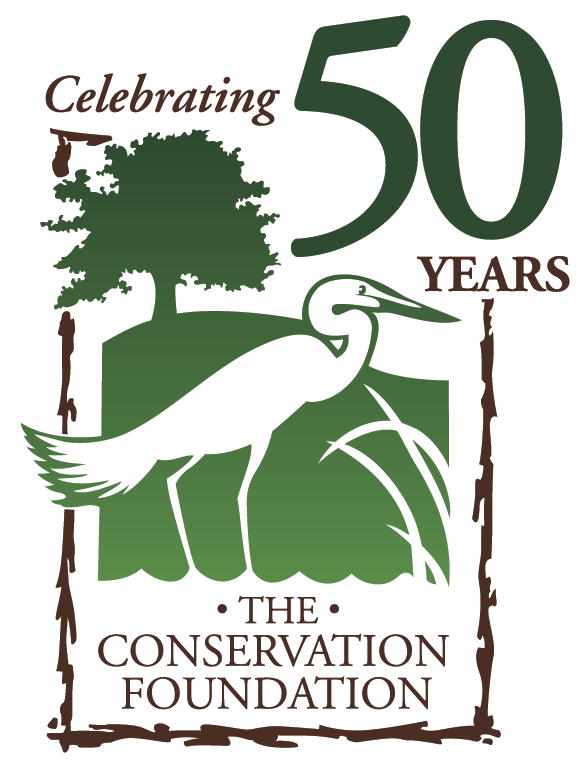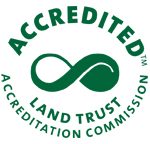The big news in the conservation world this summer is that the monarch butterfly is now an endangered species. The International Union for the Conservation of Nature (IUCN) listed monarchs as endangered on their Red List of Threatened Species. This is different from the federal Endangered Species Act, which does not currently list monarch butterflies.
The Monarch Butterfly: Poster Child for Pollinators Under Stress
Many of us know and love monarchs for their vibrant orange wings as well as their astonishing migrations from Mexico to Illinois and back each year. Once abundant in prairies, farm fields, and neighborhoods, the monarch population is on a steep decline. According to the IUCN, the eastern population of monarchs—the group that includes the butterflies that travel from Mexico to Illinois—has declined by 84% from 1996 to 2014.
Monarch butterflies get the most attention, but in reality, they are the poster child for all native pollinators struggling with habitat loss, pesticides, and weather fluctuations. This listing brings more awareness to the challenges butterflies, bees, and other native insects face in today’s landscape.
However, this listing doesn’t mean there’s no hope for monarchs. We’ve seen spectacular reversals of threatened and endangered species before, such as the spirited comeback of the once endangered bald eagle in the past few decades. Still, we must act now to protect monarchs for generations to come.
Here’s 10 ways you can help monarchs:
1. But first, plant milkweed.
Before they are butterflies, monarchs are hungry hungry caterpillars. But, unlike the Hungry Hungry Caterpillar who eats everything from apples and pears to chocolate cake and salami, monarch caterpillars only eat milkweed leaves. This is why it is crucial to plant milkweed in our gardens and parks if we want to save monarchs.
More detail: Plants in the milkweed family are the host plant for monarch caterpillars. There are 22 species of milkweed native to Illinois, so there’s sure to be a type that will grow well in your garden! Common milkweed, butterfly weed, and swamp milkweed are a few native species you could try growing.
2. Don’t forget nectar plants!
Just as important as food for monarch caterpillars, is food for monarch butterflies. As a butterfly, monarchs need nectar from flowers. Monarch butterflies are in Illinois from early June to late Fall, so be sure to plant an assortment of flowers that will bloom throughout their stay here.
For example: Culver’s root (Veronicastrum virginicum) in the late spring and summer, purple coneflower (Echinacea spp.) in the summer, and New England Aster (Symphyotrichum novae-angliae) in the late summer and fall will help provide a steady nectar supply for monarch butterflies. Check out this guide from Xerces Society for more monarch nectar plant inspiration, and The Conservation Foundation’s Butterfly Guide for attracting local butterfly species. Make sure to pick flowers that are suited to the conditions of your garden.
3. Diversify, diversify, diversify. A variety of plants builds an ecosystem.
We obviously want to help monarch butterflies, but why not widen your focus from supporting a single species to encouraging a whole ecosystem? Besides, supporting a diverse and healthy ecosystem will do more to help monarchs in the long run. In practice, this means planting a wide variety of native flowers like we mentioned in the last tip as well as native grasses, trees, and shrubs.
Did you know? Oak trees support more species of insects than any other tree. In fact, oaks provide food and habitat for 534 types of caterpillars! Native trees are key for building a thriving ecosystem in your yard.
4. Ask your local garden center to stock native flowers.
There’s a growing demand for native flowers, but not enough supply to meet it. Remember that we have power as consumers! Tell your local garden center you want native plants.
Here’s a tip: Your garden center might already have a connection to a native plant nursery and can easily place an order. Try searching this list of Midwest garden centers that stock Natural Garden Natives, a local and quality source for native plants.
5. Find a reputable source for native plants.
A BIG problem in the native plant world is that some of the most convenient places to buy native plants—AKA big box stores—spray their plants with insecticides and fungicides. Some of these chemicals get into a flower’s pollen and nectar, which has dire consequences for butterflies and bees. Before buying, seek out local growers and ask—are these plants treated with insecticides?
Start here: We have a list of local native plant sources on our website.
6. Stop the spray—spraying for mosquitos kills more than just mosquitos.
Mosquito sprays indiscriminately kill beneficial insects like bees, caterpillars, butterflies, and fireflies. Fortunately, there are other steps you can take to reduce mosquitos around your home that don’t involve environmentally harmful chemicals.
Instead: Prevent mosquitos from breeding near your home by removing all sources of standing water. Check around your house for buckets, planters and pots, forgotten cups, clogged gutters, tarps, and anything else that can hold water. Don’t forget to wear mosquito repellent or protective clothing when mosquitos are most active at dawn and dusk.
7. Help us help you. We offer yard visits through Conservation@Home.
There’s a lot you can do to help monarchs and other pollinators at home, but sometimes it’s hard to know where to start. Whether you’re just beginning to make your yard butterfly-friendly or don’t know what to do next, The Conservation Foundation can help you take the first or next step. Through the Conservation@Home program, we offer yard visits and advice for homeowners wanting to help wildlife, conserve water, and up the sustainability of their yard. For example, we can tour your property and suggest native plants that will work well for your garden’s conditions.
Get involved: Click here to learn more about the Conservation@Home certification program or reach out to us at gonative@theconservationfoundation.org to set up a yard visit.
8. Lead by example and spread the word.
Let’s not underestimate the power of leading by example! When you enliven your home or community space with native flowers, the butterflies will come. Then, your neighbors and guests will see your flourishing flowers that are a-flutter with butterflies. Maybe they’ll become curious, ask how you did it, and start incorporating native flowers into their landscaping.
Spread the word: Posting a sign in your yard lets your community know that your gardens are helping butterflies, bees, birds, and other wildlife. Conservation@Home certification awards you such a sign to display. You can also find some monarch-specific signs from Monarch Joint Venture.
9. Volunteer for habitat restoration projects.
Habitat loss is the main reason for the decline of monarch butterflies. If you’re looking for an active, outdoor volunteer opportunity, join one of the many ongoing projects to restore habitat in local preserves.
How to volunteer: Check out volunteer opportunities at your county’s Forest Preserve District and The Conservation Foundation.
10. Protect remaining open space in Illinois.
Of course, land needs to be protected before we can restore it. Efforts to conserve the last remaining parcels of habitat in Illinois, such as intact prairies, are even more urgent.
The Conservation Foundation has helped preserve more than 35,000 acres of open space—and the support of our members made it possible. Donations from our members help protect land and habitat for all Illinois native plants and wildlife, including monarch butterflies.
Save open space: Donate at https://theconservationfoundation.sikich.digital/get-involved/donate/
Thank you for caring about the future of monarchs and our natural heritage here in Illinois. Remember, we can protect our environment for future generations—but only if we work together and make a stand for nature where we live.

The Conservation Foundation works to protect monarch butterflies and other pollinators by preserving and restoring natural areas, helping homeowners create environmentally-friendly yards through Conservation@Home, and working as a partner of the DuPage Monarch Project.


